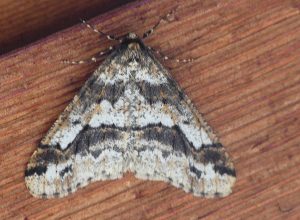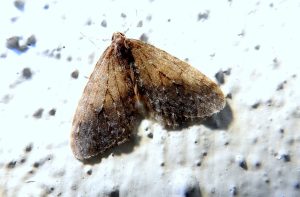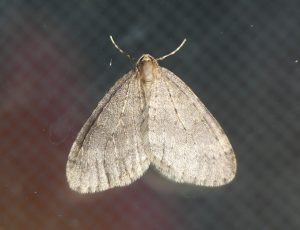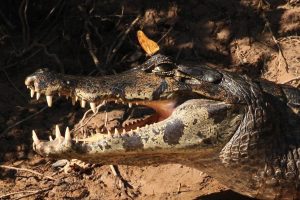2023 November 22
Here is a female European Winter Moth Operophtera brumata from Saanich today.
 Female Operophtera brumata (Lep.: Geometridae) Jeremy Tatum
Female Operophtera brumata (Lep.: Geometridae) Jeremy Tatum
2023 November 22
Here is a female European Winter Moth Operophtera brumata from Saanich today.
 Female Operophtera brumata (Lep.: Geometridae) Jeremy Tatum
Female Operophtera brumata (Lep.: Geometridae) Jeremy Tatum
2023 November 14
Jochen Möhr sends pictures from Metchosin of the moth known as Erannis vancouverensis. Jeremy Tatum writes: This species looks so like the European E. defoliaria that I have long suspected that they are one and the same species. These are males; the females, like the Winter Moth, have no functional wings.
 Erannis vancouverensis/defoliaria (Lep.: Geometridae) Jochen Möhr
Erannis vancouverensis/defoliaria (Lep.: Geometridae) Jochen Möhr

Erannis vancouverensis/defoliaria (Lep.: Geometridae) Jochen Möhr
 Erannis defoliaria (Lep.: Geometridae) Butterfly Conservation UK
Erannis defoliaria (Lep.: Geometridae) Butterfly Conservation UK
Winter Moths Operophtera sp. are now approaching the peak of their season. Most are the European Winter Moth O. brumata, but in some places, in particular Goldstream Park, the native O. occidentalis is to be found. Val George went to Goldstream today and photographed two winter moths (below). Jeremy Tatum writes that he believes both are O. brumata.
 Operophtera brumata (Lep.: Geometridae) Val George
Operophtera brumata (Lep.: Geometridae) Val George
 Operophtera brumata (Lep.: Geometridae) Val George
Operophtera brumata (Lep.: Geometridae) Val George
2023 November 10
Jochen Möhr writes from Metchosin: Finally, an Operophtera – but which one?
Jeremy Tatum writes: I’d call this O. brumata. I had two at my Saanich apartment this morning – the first I’ve seen here this season. Moth-ers might take their cameras to the Goldstream Park Nature House, where sometimes O. occidentalis is the most numerous of the Winter Moths. There is even a chance there of finding the rarer one, O. danbyi.
 European Winter Moth Operophtera brumata (Lep.: Geometridae) Jochen Möhr
European Winter Moth Operophtera brumata (Lep.: Geometridae) Jochen Möhr
While thinking of yesterday’s photograph of a butterfly drinking tears from the eyes of a caiman, I seem to remember reading somewhere that one of our erebid moths sometimes imbibes fluids from the eyes of cattle. I have forgotten which moth – it may possibly have been the Herald Moth Scoliopteryx libatrix. If any viewer has information on this, please do let us know.
2023 November 9
The photograph below was sent to me (Jeremy Tatum) by a former student, who showed a touching faith in my ability to identify butterflies from a photograph of the underside of a butterfly photographed in Brazil. This is, of course, not remotely within the area normally covered by this site (Vancouver Island), but there are few (if any!) local butterflies to be seen just now, and this photograph is of quite exceptional interest. Apparently, Paul’s main intent was to photograph the caiman, and he didn’t know that there was a butterfly in the photograph until he examined it later. Still less did he know that he had photographed a remarkable behaviour.

Dryas julia (Lep.: Nymphalidae – Heliconiinae) Paul Coleman
My computer suggested that I reply to Paul with the words: I haven’t the slightest idea. I almost did that before it occurred to me that identification might actually be not impossible. The characteristic wing shape said immediately that it was from the nymphalid subfamily Heliconiinae. After that, options were rather limited. The colour, and what little can be seen of the pattern, and the locality, pointed strongly to Dryas julia. When we look at what the butterfly is doing, the identification is confirmed.
It was only recently discovered that the Julia butterfly slightly irritates the eyes of a caiman, causing it to cry, and the butterfly then “nectars” on these crocodile tears. So, without planning it, Paul had photographed this quite remarkable behaviour.
2023 November 7
Val George writes: Today, November 7, there were two Winter Moths, Operophtera brumata, on the walls of the Nature House at Swan Lake:

Operophtera brumata (Lep.: Geometridae) Val George